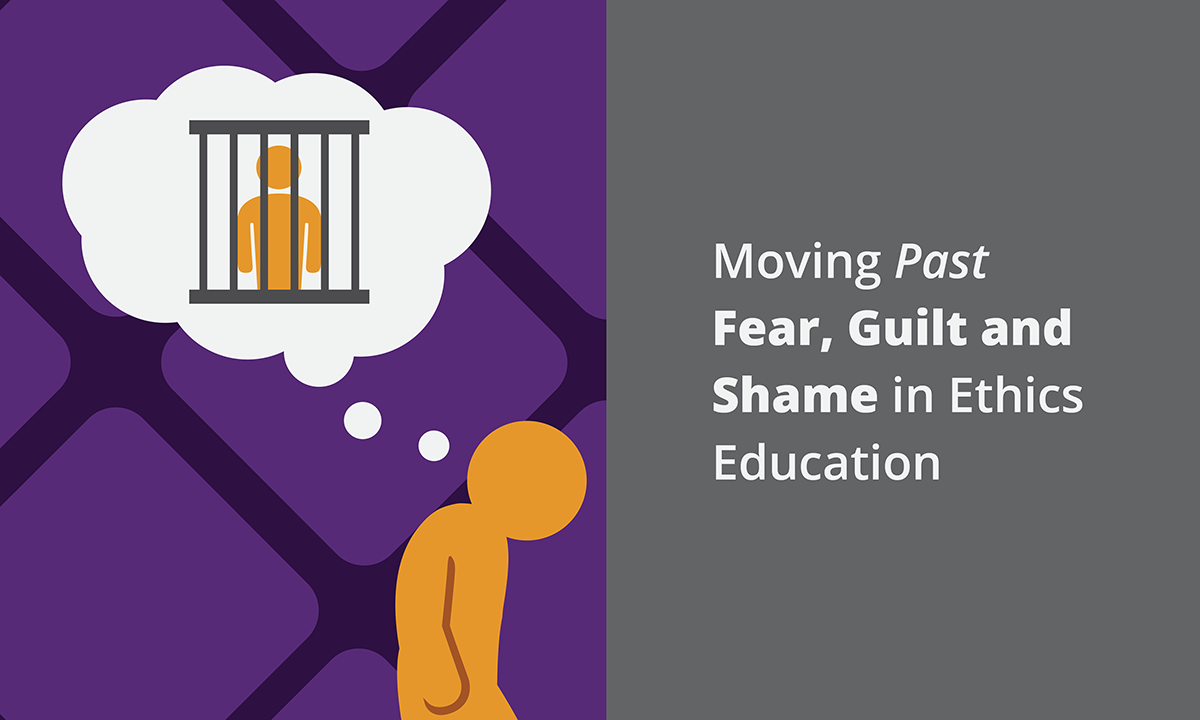
Moving Past Fear, Guilt and Shame in Ethics Education
Do you remember your Sex Ed class?
Of course, everyone had a different experience, but I think the one thing that’s universal is that it was awkward and supremely uncomfortable. I always think of Coach Carr from Mean Girls succinctly teaching sex ed by saying “Don't have sex, because you will get pregnant and die!”
Source: Mean Girls
A lot of ethics and compliance education seems to follow the Coach Carr strategy of motivating people with fear. Instead of the fear of getting pregnant and dying, though, it’s the fear of getting fired, fined, sued, or sent to prison. However, with the exception of one particularly strange anti-meth campaign in Montana, using fear as a motivator has virtually never been effective at reducing bad behavior. In fact, some studies have shown that “Scared Straight” programs actually increase undesirable behavior!
So if your training programs are focused on the negative consequences of bad behavior, they probably aren’t doing much.
But luckily, fear isn’t the only motivational tool at our disposal. Plenty of morality-based education relies on classic techniques like guilt, shame, and good ol’ obligation, and they’re generally identifiable by the excessive use of the word “should." It’s all about what a good person should do.
Sure, guilt, shame, and obligation can change behavior, but in my experience, they also damage relationships and build resentment. And those downsides often long outlast the positive changes.
If we cut out fear, guilt, shame, and obligation, what are we left to work with?
I would suggest desire. 🤩
What better way to motivate people than by offering them what they want? Instead of training people to follow the rules because that’s what they “should” do, or because if they don’t, they’ll be punished, train them to follow the rules because they want to.
Figure out what your participants want, and then draw the line connecting your training and that outcome.
Let’s take a look at an example scenario. We’ll keep it pretty generic for simplicity’s sake, so you’ll have to forgive my cheesy vague examples.
Imagine that your goal is to get employees to know when to report conflicts of interest, and more importantly, have them actually do it. A fear-based method might look something like this:
“If you aren’t sure, report it just to be safe. If you don’t, it could result in up to a year in prison and tens of thousands of dollars from your own pocket.”
That feels like it should be pretty convincing. After all, I don’t want to spend a year in prison! But no matter how compelling it feels, fear just doesn’t move the needle for most people.
Guilt-based methods come in different forms. Sometimes they can be pretty intricate, like this:
“If you aren’t sure whether your situation is a conflict of interest, it’s best to report it anyway. If it comes out later that there was an undisclosed conflict, it could undermine all the work you and your coworkers have done, cost many people their livelihoods, and even undermine public safety.”
But sometimes guilt-based pressures are simpler. Something like:
“If you don’t report it, you’ll feel bad because you’ll know you’ve made the wrong decision even if no one else does.”
Interestingly, while we know that guilt does change people’s behavior, the science behind how it changes behavior is still developing. Sometimes it causes them to behave better, but only if someone they’ve hurt is nearby and can watch them behave better. And if there’s too much guilt, it actually makes them behave worse than they did before!
There’s so much we don’t know about different types of guilt, shame, and obligation. But it’s clear that unless applied in the exact optimal setting, they can all backfire spectacularly.
Source: Looney Tunes
Let’s round out this example by looking at how we can teach this same principle using desire. One of the most universal human desires is peace: peace with ourselves and peace with our decisions.
A desire-focused method that leads with peace may look like this:
“I don’t know about you, but when I get home, I want to spend time with my loved ones and leave work at work. I don’t want to spend precious mental energy second-guessing my decisions. So, if you aren’t sure about whether something is a conflict of interest, it’s best to just report it. That way, you don’t have to worry about it.”
Despite the fact that “it’s just mentally easier” feels less powerful than threats of prison time and appeals to the greater good, it strikes at what people actually care about. Everybody wants to be less worried and stressed. Everybody wants peace.
Peace is a great one, but there are other common motivators. Respect, trust, and freedom, in addition to peace, form the backbone of almost every human desire. If you help people realize that your training and other compliance communications will give them the tools to fulfill those desires, you will see behavior change. And it will be a change that lasts.
Dallin Cooper is on a mission to change the way we look at ethics. He is a keynote speaker and ethics consultant who helps people and companies develop moral decision-making skills so they can enjoy more respect, trust, freedom, and peace in their lives. He is the author of the ethical leadership book Get On The Bull: Developing Attitudes and Behaviors for Successful Leadership. You can follow Dallin’s work across multiple platforms at https://linktr.ee/dallincooper.

